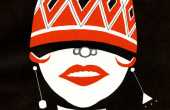Tahlia Whitfield
Contributing writer for The Artifice.
Junior Contributor II
- Articles
1 - Featured
1 - Comments
3
- Ext. Comments
3 - Processed
0 - Revisions
0
- Topics
1 - Topics Taken
0 - Notes
2
- Topics Proc.
0 - Topics Rev.
0
- Points
216 - Rank
X - Score
91
Latest Articles
Latest Topics
Pending | The Development of the Artists BookThe most significant quality of a book is how it is an object containing information which can be interpreted, contemplated and forecasted by the reader into their own imagination. We can look at the earliest mediums of visual communication and pictures that represent concepts. In the Renaissance, manuscripts were adorned with ornament and images, clearly understood in correlation with the text creating its own physical operation. Mankind was in the development of understanding and articulating their own history when printing was invented, several illustrated books formats developed throughout the 20th century and Johannes Gutenberg's invention of the movable type allowed a substantial amount of flexibility for authors, artists and publishers. Many artists during the last century figured that books were excellent vehicles for their ideas as well as a method of expansion for audiences to view. Pictures were explicitly associated with the artists oeuvres and therefore the artist would not need to rely on the textual component.
|
Photography and PaintingArtistic medium and perception prospered in the 19th century, it is the emergence of photography which influenced artists to innovate and alter the way they made art. Photographs allow an audience to observe and categorize, they aren't just statements of the world but actual pieces of it. While painting can be a narrow and selective interpretation, a photograph can be treated as a mirror of reality. How did photography fundamentally transform painting?
|
Latest Comments
| Harry Potter: Books vs. Movies | |
This is a brilliant article, beautifully written! | The Changing Faces of Fear in Australian Literature |
Good read, I find it hard to adjust from a well cultivated novel to a film adaption. but I will make an exception on Francis Ford Copollas The Godfather which in my opinion boasted a much more sophisticated adaption in comparison to Mario Puzzo’s novel. | An Analysis into Screen Adaptations |

Thankyou for this article, I’ve always been a fan of the Harry Potter films but found there was so much detail missing in comparison to the books.